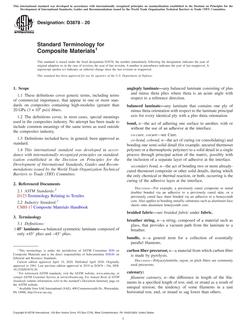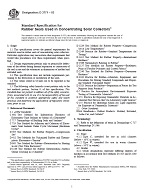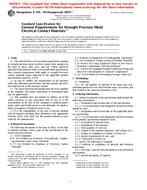1.1 This practice considers the selection and characterization (that is, defining soil, rock types, and hydraulic gradients) of the target monitoring zone as an integral component of monitoring well design and installation. Hence, the development of a conceptual hydrogeologic model for the intended monitoring zone(s) is recommended prior to the design and installation of a monitoring well.
1.2 These guidelines are based on recognized methods by which monitoring wells may be designed and installed for the purpose of detecting the presence or absence of a contaminant, and collecting representative ground water quality data. The design standards and installation procedures herein are applicable to both detection and assessment monitoring programs for facilities.
1.3 The recommended monitoring well design, as presented in this practice, is based on the assumption that the objective of the program is to obtain representative ground water information and water quality samples from aquifers. Monitoring wells constructed following this practice should produce relatively turbidity-free samples for granular aquifer materials ranging from gravels to silty sand and sufficiently permeable consolidated and fractured strata. Strata having grain sizes smaller than the recommended design for the smallest diameter filter pack materials should be monitored by alternative monitoring well designs which are not addressed in this practice.
1.4 The values stated in inch-pound units are to be regarded as standard. The values in parentheses are for information only.
1.5 This standard does not purport to address all of the safety concerns, if any, associated with its use. It is the responsibility of the user of this standard to establish appropriate safety and health practices and determine the applicability of regulatory limitations prior to use.
1.6 This practice offers a set of instructions for performing one or more specific operations. This document cannot replace education or experience and should be used in conjunction with professional judgment. Nat all aspects of this practice may be applicable in all circumstances. This ASTM standard is not intended to represent or replace the standard of care by which the adequacy of a given professional service must be judged, nor should this document be applied without consideration of a project’s many unique aspects. The word “Standard” in the title of this document means only that the document has been approved through the ASTM consensus process.5092
Product Details
- Published:
- 07/10/2002
- Number of Pages:
- 14
- File Size:
- 1 file , 210 KB


